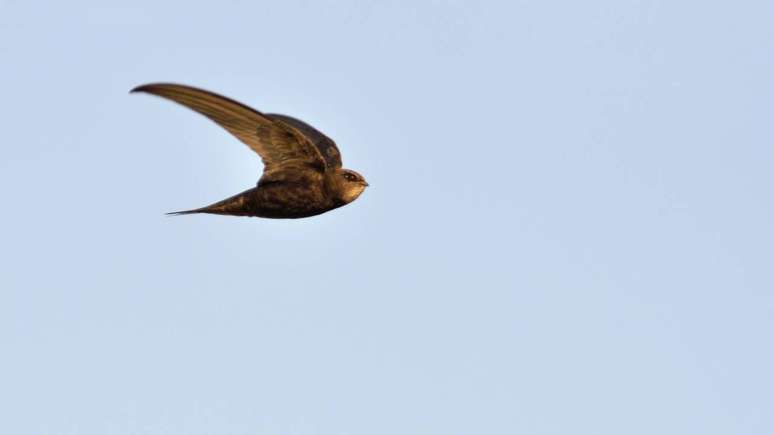Brazil has recorded the first deaths from the disease in the world and is investigating a possible link between the virus and microcephaly; the country has already registered more than 7,000 cases of infection
The cases of oropoucha fever in Brazil have increased dramatically in 2024. While in 2023 832 cases were registered, according to data from the Ministry of Healththis year the number jumped to 7,236. With the Confirmation of two deaths and the investigation into the relationship between the disease and cases of microcephaly increases concern about the spread of the virus.
According to the ministry, the leap is linked to the expansion of tests to detect the disease, distributed throughout the national network of Central Public Health Laboratories (Lacen). From that moment on, the spread of cases, until then concentrated in the North region, was discovered in states throughout Brazil.
Check below the main information on the topic and the current scenario in the country:
What is oropoucha fever?
Oropouche fever is a disease caused by an arbovirus (mosquito-borne virus) called Orthobunyavirus oropoucheense (OROV). Transmitted to humans mainly by the bite Culicoides paraensisknown as maruim or sandfly, this virus was detected in Brazil in the 1960s, based on a blood sample from a sloth captured during the construction of the Belém-Brasília highway.
Since then, isolated cases and outbreaks have been reported in Brazil, mainly in the states of the Amazon region. Cases and outbreaks have also been reported in countries such as Panama, Argentina, Bolivia, Ecuador, Peru and Venezuela.
How does transmission occur?
Transmission occurs when the maruim mosquito bites an infected person or animal and then bites a healthy person, transmitting the disease. Therefore, there are two types of disease transmission cycle:
Sylvatic cycle: In this cycle, animals such as sloths and monkeys are the hosts of the virus. Some types of mosquitoes, such as Coquilles diavenezuelensis and the Aedes serratusIt can also carry the virus, but maruim is considered the main transmitter of this cycle.
Urban cycle: Humans are the main hosts of the virus. The maruim is the main vector, but some cases may also be associated Culex quinquefasciatuscommonly found in urban environments.
“The diversity of mosquitoes involved in the transmission of the virus is one of the most serious concerns regarding the increase in cases in Brazil, especially in regions beyond the Amazon, since the spread can occur more rapidly, considering that people are also hosts,” he said. State the infectious disease specialist Albert Einstein Israelite Hospital Emy Gouveia.
How to distinguish Oropus fever from dengue fever?
In addition to the difference between mosquito vectors (in the case of dengue, it is the Aedes Aegizi), diseases differ based on the evolution of the clinical picture.
Although patients diagnosed with dengue may develop severe abdominal pain and, in severe cases, internal bleeding, these symptoms are not usually seen in oropouche fever. In the case of oropouche, more severe conditions may involve the central nervous system, causing aseptic meningitis and meningoencephalitis, especially in immunocompromised patients.
However, it is worth noting that in the deaths recorded for the first time in Brazil, the patients presented symptoms similar to those of severe dengue.
What is the relationship between oropucha fever and microcephaly?
Researchers from the Evandro Chagas Institute (IEC), associated with the Ministry of Health, have found evidence that oropouche fever can be transmitted from mother to child during pregnancy and have begun to investigate the relationship between cases of death and fetal malformations with the infection.
The IEC identified the presence of antibodies against the virus in four babies born with microcephaly, as well as the genetic material of the virus in a stillborn fetus at 30 weeks of gestation.
The ministry warned of the risk for pregnant women, but stressed that while the findings are evidence of vertical transmission of the virus, the limitations of the study do not allow it to confirm that infection during pregnancy is the cause of neurological malformations in children.
According to Pedro Vasconcelos, a researcher at IEC and one of the subjects involved in the investigation, although tests that demonstrate the presence of viral antigens are still needed to prove it, there is a high probability that the virus is indeed the cause of the documented cases of microcephaly.
“Because finding IgM antibody in the central nervous system is very indicative of an infection at the site, that is, that the virus has entered, infected and induced the formation of antibodies in the region,” he said.
The ministry is investigating six possible cases of vertical transmission of the disease. There are three cases in Pernambuco, one in Bahia and two in Acri. Two cases resulted in fetal death, one miscarriage occurred and three cases presented congenital anomalies, such as microcephaly.
Does Oropuche fever kill?
This Thursday 25th The Ministry of Health has confirmed two deaths from oropouche fever in the interior of Bahia. According to the Ministry, no deaths caused by this disease have been recorded in the world scientific literature: these were the first fatal cases.
The victims, both women under 30 years of age and without comorbidities, presented symptoms similar to those of severe dengue. They reported muscle pain, abdominal pain, pain in the head and behind the eyes; in addition to diarrhea, nausea and vomiting.
Second relationship prepared by the Department of Health of the State of Bahia (Sesab), the patients also presented “phenomena of bleeding and liver involvement”, similar to those of dengue hemorrhagic fever, and the evolution of the condition from the onset of symptoms to death was rapid (only a few days).
Due to these factors and the spread of the virus throughout Brazil, the report considers that oropouche “already represents an epidemic of great concern for the population” and emphasizes that similarities with dengue fever may pose a challenge for diagnosis, favoring underreporting.
“If it were not for the extensive laboratory evaluation and the ongoing OROV outbreak in the region (in southern Bahia, where the cases occurred)these cases would likely have been inappropriately classified as dengue deaths,” the text reads.
What are the risk groups?
According to Gouveia, the elderly and children are the main groups at risk. In the case of the elderly, the danger is linked to the greater possibility of dehydration and the presence of comorbidities. In children, in addition to dehydration, it is the difficulty in controlling fever that increases the risk of the disease progressing.
Health authorities also call attention to the care of pregnant women, given evidence of vertical transmission and the possibility of the virus affecting children.
Where are the cases of the disease in Brazil?
In 2024, 7,236 cases of the disease were recorded in 20 Brazilian states:
- Amazon: 3,224
- Rondônia: 1,709
- Bay: 830
- Holy Spirit: 412
- Acres: 265
- Roraima: 236
- Saint Catherine: 155
- Pernambuco: 86
- Minas Gerais: 83
- Pará: 74
- Rio de Janeiro: 62
- Ceara: 39
- Piaui: 27
- Mato Grosso: 17
- Love: 7
- Maranatha: 3
- Parana: 3
- Tocantins: 2
- Mato Grosso del Sur: 1
- Paraiba: 1
How to prevent?
According to the Ministry of Health, forms of prevention include:
- If possible, avoid areas where there are many mosquitoes;
- Wear clothing that covers most of the body and apply repellent to exposed areas;
- Keep your home clean by removing potential mosquito breeding sites, such as standing water and accumulated leaves;
- If there are confirmed cases in your region, it is recommended to follow the guidance of your local health authority to reduce the risk of transmission.
How is the diagnosis made?
The test that identifies the disease is the RT-PCR developed by Fiocruz Amazonas. The analysis is performed using the patient’s blood at the Central Laboratories of Public Health (Lacens).
Due to the limited availability of tests, they are only performed on people with symptoms typical of the acute phase of the disease or who have tested negative for dengue or chikungunya. In addition, when the patient is not from the Amazon, but has passed through the region, the attention is doubled.
The Ministry of Health recommends carrying out investigations on all suspected and/or laboratory-diagnosed cases of OROV infection, with the aim of describing the clinical and epidemiological characteristics, as well as identifying the vector species involved in transmission.
What is the treatment like?
There is still no specific drug for the treatment of oropathic fever. Therefore, treatment is supportive, that is, drugs are usually administered for pain, nausea and fever, in addition to hydration and rest.
Source: Terra
Ben Stock is a lifestyle journalist and author at Gossipify. He writes about topics such as health, wellness, travel, food and home decor. He provides practical advice and inspiration to improve well-being, keeps readers up to date with latest lifestyle news and trends, known for his engaging writing style, in-depth analysis and unique perspectives.









